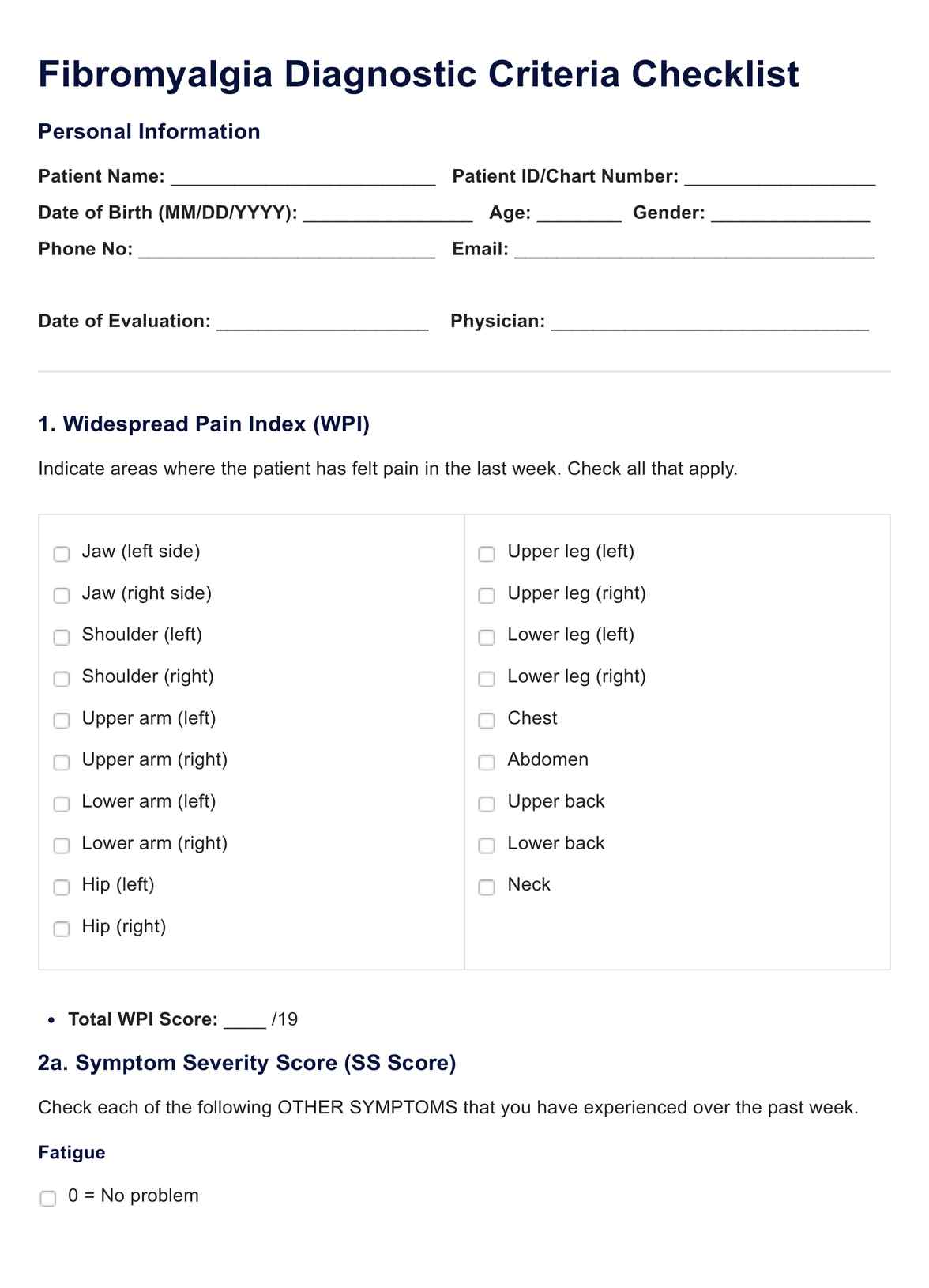The Fibromyalgia Checklist is a diagnostic tool used by healthcare professionals to assess and diagnose fibromyalgia. It typically includes the Widespread Pain Index (WPI), the Symptom Severity (SS) scale, and questions about symptom duration and other health conditions to rule out other causes of pain.

Fibromyalgia Checklist Template
Download our Fibromyalgia Checklist Template to streamline diagnosis with comprehensive criteria, including WPI and SS scores, for effective patient assessment.
Fibromyalgia Checklist Template Template
Commonly asked questions
The WPI is a part of the checklist that measures the number of areas in the body where the patient has felt pain in the last week. It helps in assessing the extent of the pain's distribution, which is a key factor in diagnosing fibromyalgia.
The SS scale assesses the severity of fibromyalgia symptoms such as fatigue, waking unrefreshed, cognitive symptoms, and the presence of other general physical symptoms. This scale helps in understanding the impact of these symptoms on a patient's life.
EHR and practice management software
Get started for free
*No credit card required
Free
$0/usd
Unlimited clients
Telehealth
1GB of storage
Client portal text
Automated billing and online payments











